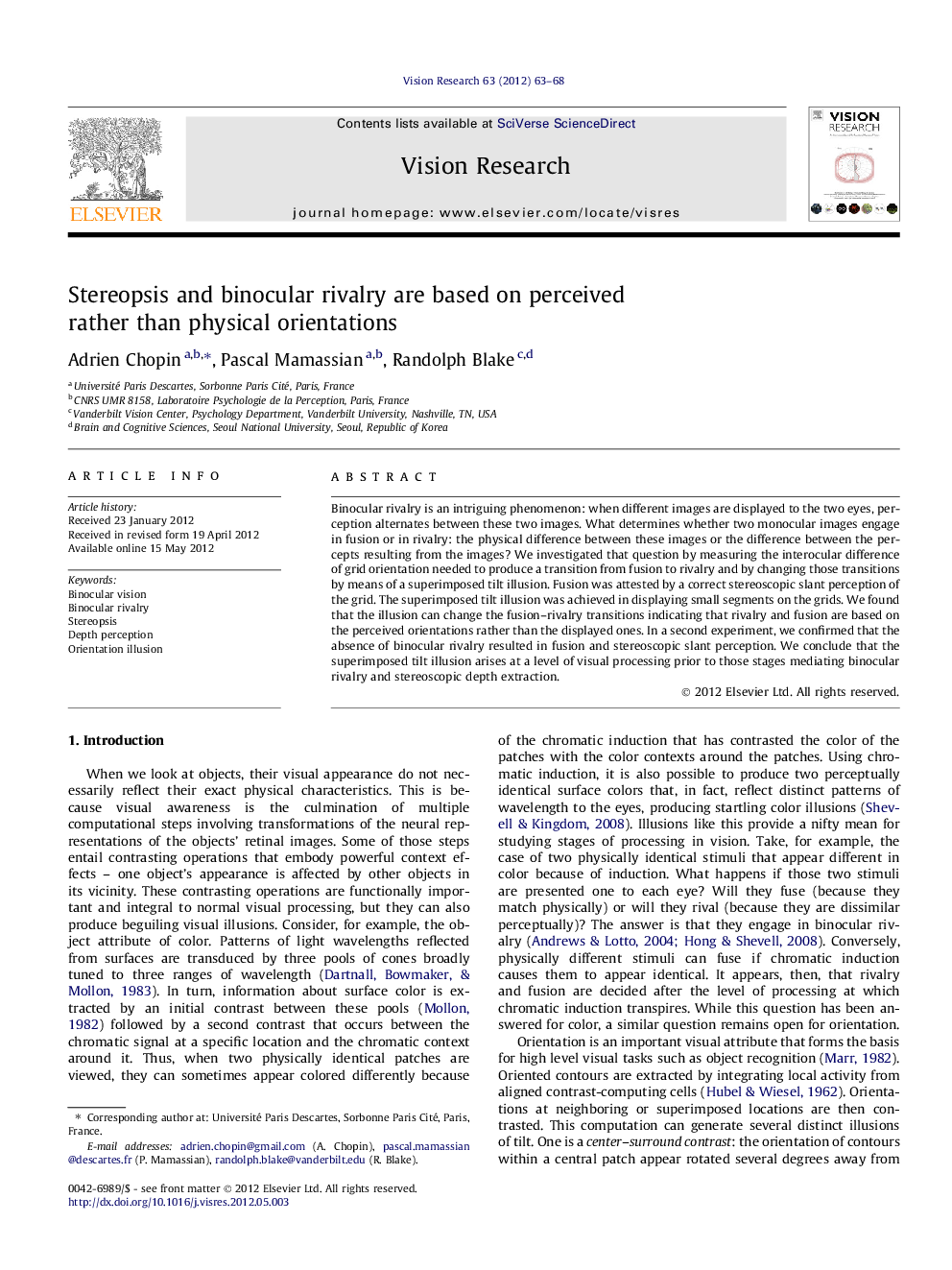| کد مقاله | کد نشریه | سال انتشار | مقاله انگلیسی | نسخه تمام متن |
|---|---|---|---|---|
| 4033996 | 1603231 | 2012 | 6 صفحه PDF | دانلود رایگان |

Binocular rivalry is an intriguing phenomenon: when different images are displayed to the two eyes, perception alternates between these two images. What determines whether two monocular images engage in fusion or in rivalry: the physical difference between these images or the difference between the percepts resulting from the images? We investigated that question by measuring the interocular difference of grid orientation needed to produce a transition from fusion to rivalry and by changing those transitions by means of a superimposed tilt illusion. Fusion was attested by a correct stereoscopic slant perception of the grid. The superimposed tilt illusion was achieved in displaying small segments on the grids. We found that the illusion can change the fusion–rivalry transitions indicating that rivalry and fusion are based on the perceived orientations rather than the displayed ones. In a second experiment, we confirmed that the absence of binocular rivalry resulted in fusion and stereoscopic slant perception. We conclude that the superimposed tilt illusion arises at a level of visual processing prior to those stages mediating binocular rivalry and stereoscopic depth extraction.
► Orientation disparity between dichoptically viewed lines can yield 3D slant.
► Orientation disparities exceeding a limit produce rivalry, not 3D slant.
► Illusory line tilt can be induced by short lines placed on a long line (Zöllner).
► Illusory tilt influences disparities defining the transition from slant to rivalry.
► Rivalry and stereopsis rely on illusory rather than displayed orientations.
Journal: Vision Research - Volume 63, 15 June 2012, Pages 63–68